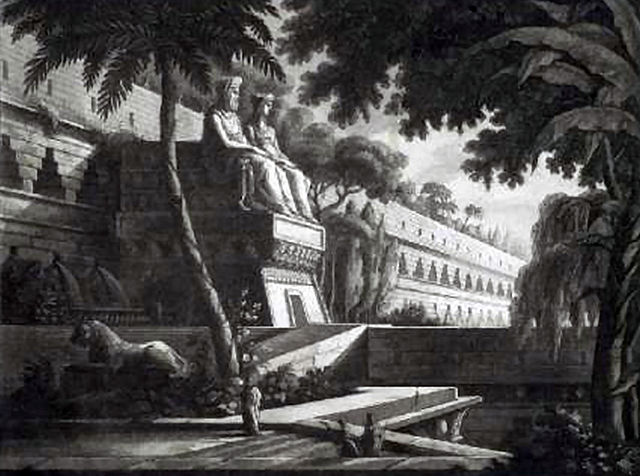Semiramide riconosciuta (Meyerbeer)
Semiramide riconosciuta is a dramma per musica in two acts by Giacomo Meyerbeer. It is the composer's fifth opera and the second that he composed for a theatre in Italy. The text is an adaptation of a pre-existing libretto by Pietro Metastasio that had already been set to music by numerous other composers. The opera had its premiere at the Teatro Regio in Turin on 3 February 1819.
Set design for the Hanging Gardens of Babylon in a 1820 Bologna production
Giacomo Meyerbeer, c. 1825
Carolina Bassi, who created the role of Semiramide
Set design for the Bologna production in 1820 of Meyerbeer's Semiramide riconosciuta
Giacomo Meyerbeer was a German opera composer, "the most frequently performed opera composer during the nineteenth century, linking Mozart and Wagner". With his 1831 opera Robert le diable and its successors, he gave the genre of grand opera 'decisive character'. Meyerbeer's grand opera style was achieved by his merging of German orchestra style with Italian vocal tradition. These were employed in the context of sensational and melodramatic libretti created by Eugène Scribe and were enhanced by the up-to-date theatre technology of the Paris Opéra. They set a standard which helped to maintain Paris as the opera capital of the nineteenth century.
Giacomo Meyerbeer, engraving from a photograph by Pierre Petit (1865)
The young Jacob Beer, portrait by Friedrich Georg Weitsch (1803)
Amalie Beer, Meyerbeer's mother, painting by Carl Kretschmar [de], c. 1803
Gioachino Rossini in 1820







![Amalie Beer, Meyerbeer's mother, painting by Carl Kretschmar [de], c. 1803](https://upload.wikimedia.org/wikipedia/commons/thumb/e/e9/Amalie_Beer.jpg/429px-Amalie_Beer.jpg)
